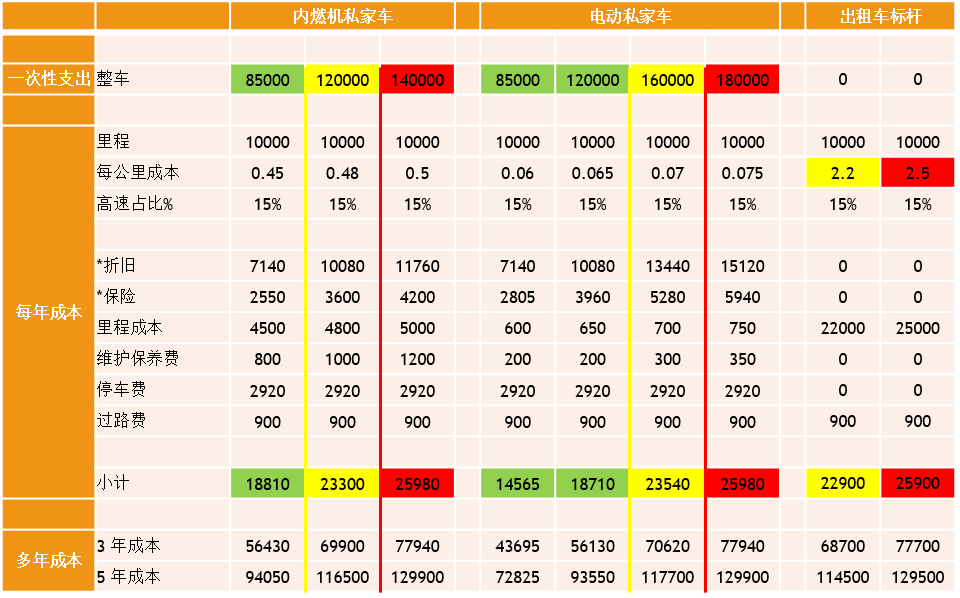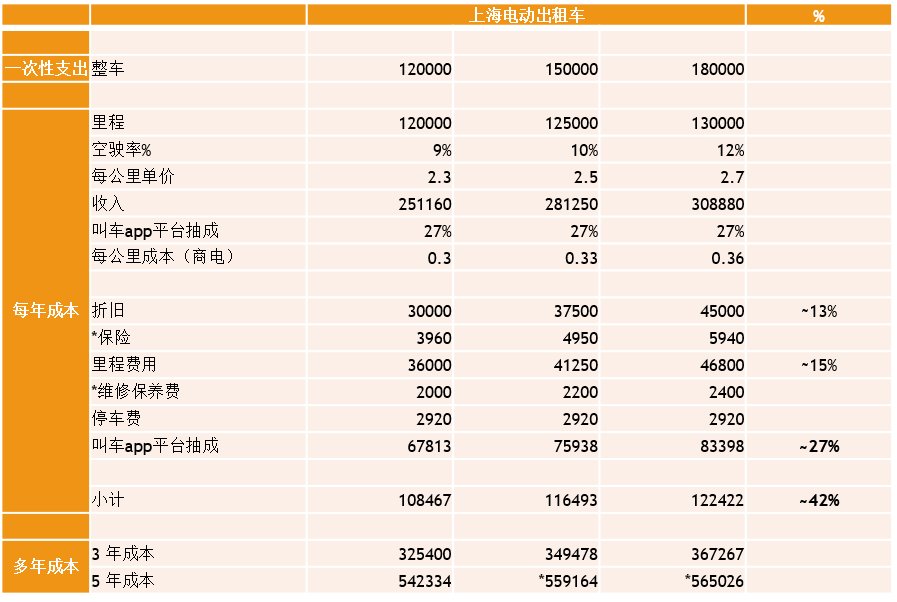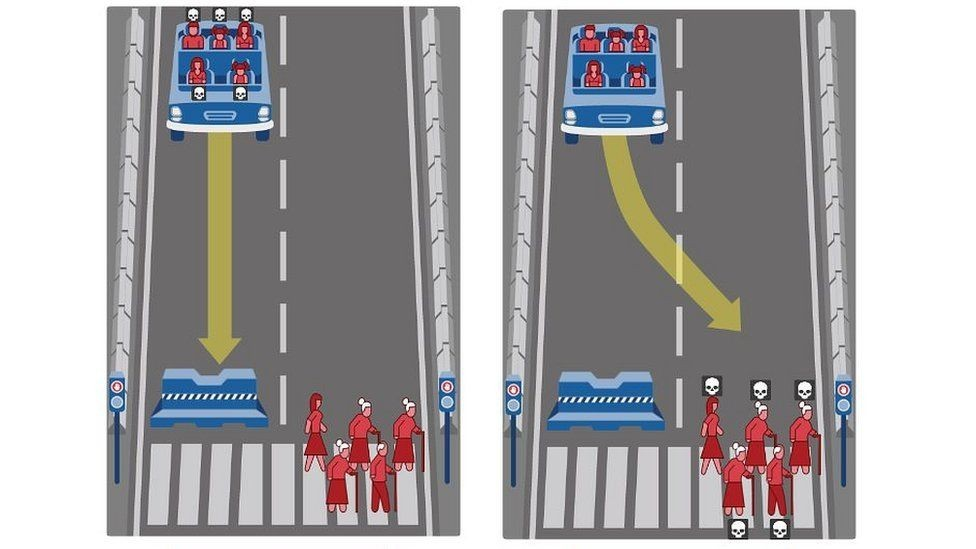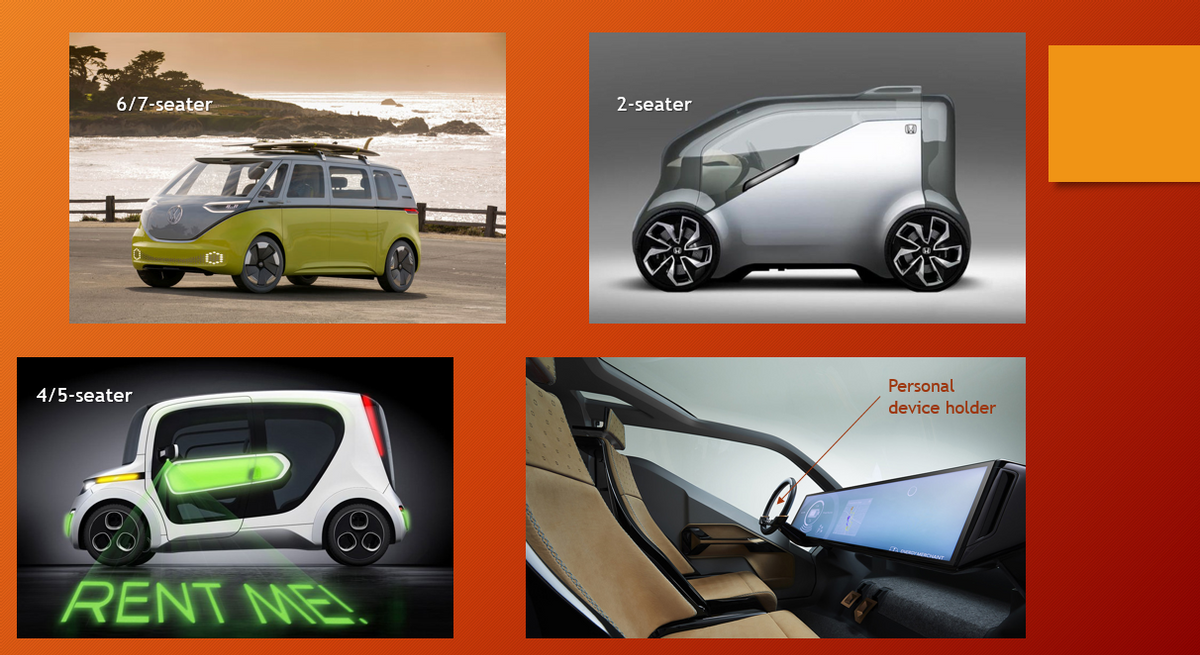I wrote an article in English on LinkedIn last month, but since the social networking features of LinkedIn China were removed, the article can no longer be accessed in China.
I have been thinking about this topic for the past month, and a few weeks ago, I created a ppt.
First, let’s take a look at the primary needs people have when traveling:
That is, a good experience and a reasonable and affordable cost of getting from point A to point B.
Driving your own car, renting a car to drive, taking a taxi, riding public transportation, or using a shared bike, among others.
Every mode of transportation offers a different experience, time, and cost. Remember, for every trip, you can choose a different or the same mode of transportation.
Let’s not compare public and private transportation, but instead focus on private transportation options in the near future. Let’s discuss one of the two options: driving a car or taking a taxi.
Did you know that when cars are expensive enough, driving can be more expensive than taking a taxi?
Let’s analyze the cost of owning a car versus taking a taxi in the Chinese market, as an example

Based on the cost of a taxi ride, we draw a boundary line between rational and emotional choices when purchasing cars of different levels. We roughly define the left side as rational and the right side as emotional. As first-tier cities have different taxi rates than second-and-third-tier cities, the red line represents first-tier taxis and the yellow line represents second-and-third-tier taxis. Furthermore, due to the difference in the cost of fuel and pure electric vehicles, the rational/emotional dividing line varies.
- Actual cost will be higher due to conservative estimates of depreciation, interest rates, loan capital, and unforeseeable expenses. Consumers make rational/irrational choices based on emotions, and no choice is necessarily right or wrong. Taxi experiences may vary depending on location, weather, and holidays. The data used for analysis is relatively fair and serves as the basis for reference and subsequent discussions.
Even without detailed calculations, people generally know which level of car is a rational choice. Based on actual vehicle sales data, rational choices cover most consumer behavior.
Compared to other countries around the world, China has such low taxi rates that we need an income/cost breakdown for taxi rides to fully understand it.

We can see that taxi drivers’ income still falls below the average income of Shanghai (124164RMB @2020).
When I realized that taxis are often cheaper than Didi, I realized that the rates for Didi Express in Shanghai have already increased, and according to current conflicts, future rates will continue to rise, and taxi rates in other cities may also increase.* The actual cost will be higher due to the use of conservative estimated interest rates, loan capital, and unforeseen expenses.
How to solve this problem?
By breaking down and subdividing the income/cost details of taxi services:
- Driver revenue ~42%
- Ride-hailing platform commission ~27%
- Mileage expenses ~15%
- Vehicle depreciation ~13%
–> Let’s try to get rid of the biggest expense by removing the driver
You may think of autonomous driving, but I don’t think it can be popularized and practical so quickly. Here is a brief explanation of my understanding of the development of autonomous driving technology.
When an event is caused by a choice, it becomes a moral issue rather than a technical issue. And I think this can only be solved by distinguishing the driving areas of the AD and non-AD vehicles.

ADAS can be used in all scenarios with clear responsibility, which is obviously more practical. In contrast, AD vehicles can only work in specific driving areas, and all AD vehicles need to be networked and connected to the facility to participate in collective decision-making.
If you disagree with this explanation, I’m sorry, but there is no need to reach a consensus here. Let me continue to use logic and hypothesis without autonomous driving, adding a little difficulty.
Ten Years+ Outlook
Assumptions
- The widespread deployment of ADAS functions will reduce the need for driving skills, and AD will not be available on most roads.
- People are becoming more and more familiar with economics (this is important because people will realize that cars are different from real estate, they depreciate, and their value usually only decreases over time, and they decrease quickly).
- Charging will not be a problem (based on 20% of car sales being EVs in 2025 and 50% of car sales being EVs in 2035), so the infrastructure related to charging must keep pace with such growth.
The number of cars in use is constantly increasing, and parking is becoming increasingly difficult. However, the average utilization rate of each car per day is always less than 8%, even if it has strong performance and high computing power, it can only be parked in the parking lot during other times, and the contradiction between mobility and sustainability is becoming more and more prominent.

How to coordinate mobility and sustainability? Here is a possible conclusion:
- Fewer vehicles will be sold to private individuals.
- More cars will be sold to transportation companies to provide transportation services to customers.
- Financial derivatives: individuals can also purchase vehicles and hand them over to transportation companies for operation during idle time in order to receive benefits.
Which type of car is most popular?– Considering the low contribution rate of vehicle depreciation and pure electric mileage cost, which is difficult to reduce, the calculation results in the Shanghai electric taxi table show that the total cost difference of vehicles with adjacent levels is only about 5%.
- Considering that the vast majority of travel scenarios do not exceed three people, the second-row space can be considered of secondary importance.
-
Vehicles must be reliable and easy to drive/use, with perfect remote control and monitoring functions, support for BYOD custom settings and functions, and standard ADAS functions.
-
Two-seater and 4/5-seater vehicles will cover most of the trips, with 6/7-seater vehicles as a supplement.
*BYOD: Bring your own device

As you can see, I will adhere to these vehicles with steering wheels, therefore, I choose these concept cars: VW ID.Buzz, Honda NeuV, Edag Light Car Sharing.
Inspiration
-
VaaS (Vehicle as a Service): vehicles are reliable and easy to drive, with reliable ADAS functions and commonly used simple functions; after connecting to personal devices, they rely on the computing power of personal devices to provide complex customized functions.
-
Vehicles are redefined as assets with lower depreciation rates.
-
Manufacturing, owning, and operating vehicles and timely leasing/long-term leasing and related financial derivatives businesses will be the wealth code of the future.
This article is a translation by ChatGPT of a Chinese report from 42HOW. If you have any questions about it, please email bd@42how.com.
